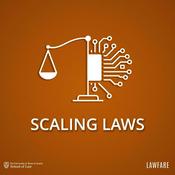144 episodes

Duffy's DOT Drives Change: National Air Mobility, Transit Upgrades, and Trucker Reforms
12/22/2025 | 2 mins.
Welcome back, listeners, to your weekly DOT dispatch. This week’s top headline: U.S. Transportation Secretary Sean Duffy unveiled the first-ever National Advanced Air Mobility Strategy on December 17th, paving the way for electric vertical takeoff vehicles and drone deliveries to transform how we fly and ship goods.Duffy’s team is moving fast with sweeping policy shifts. Back in January, he issued orders rolling back prior regulations, mandating strict cost-benefit analyses for all grants and rules—ditching environmental and equity priorities for economic wins and family impacts. DOT announced $33 million in university grants on December 19th to spark innovation in safety and efficiency, not what they call DEI or green scams. They’re also pouring $2 billion into 2,400 American-made transit buses across 45 states. In trucking, FMCSA dropped the speed limiter mandate and is overhauling safety tracking into just two categories: vehicle maintenance and driver issues, with a full rollout mid-year. Plus, a pro-trucker package enforces English-language rules for drivers.These hit hard: American families get safer, cheaper travel with projects prioritizing noise reduction and local jobs. Businesses face tougher Buy America rules but easier funding for profitable ventures—no more endless subsidies. States like Chicago risk millions if safety plans falter, forcing alignment or budget crunches. “The Department will prioritize projects that increase safety, efficiency, and improve the travel experience for American families,” Duffy said.Data shows 165 transit projects funded, delivering real upgrades. Watch for grant amendments by February and trucking number transitions by October 1st. Citizens, submit input on bridge reconstructions via DOT’s site.Keep eyes on FRA’s new rail waivers and supersonic flight rules. For details, hit transportation.gov. If you’re affected, comment now on proposed guidelines.Thanks for tuning in—subscribe for more. This has been a Quiet Please production, for more check out quietplease.ai.For more http://www.quietplease.aiGet the best deals https://amzn.to/3ODvOtaThis content was created in partnership and with the help of Artificial Intelligence AI

DOT Crackdown on Illegal CDLs, $1.5B in Infra Funding, and Policy Shifts for Transportation
12/19/2025 | 2 mins.
Welcome back, listeners, to your weekly DOT rundown. This week, the biggest headline from the U.S. Department of Transportation is Secretary Sean P. Duffy's announcement of $1.5 billion in infrastructure funding to kickstart projects and get America building again, as detailed on the official DOT newsroom site.Duffy's team is moving fast on enforcement, cracking down on illegal commercial driver's licenses. FMCSA audits exposed over 50% of New York's non-domiciled trucking licenses as illegally issued, with similar bombshells in California—where 17,000 were revoked—Minnesota facing a $30.4 million funding cut deadline in 30 days, and Pennsylvania at risk of losing $75 million. Duffy stated, "After months of deadly crashes caused by illegal foreign drivers, the Department is cracking down." Nearly 3,000 CDL training providers were booted from the registry for failing Trump-era readiness standards, and 4,500 more got warnings.On policy shifts, DOT rolled out the first-ever National Advanced Air Mobility Strategy to unlock innovative transport, plus a new app with General Motors for road trip planning tied to America250 celebrations. NHTSA proposed resetting CAFE standards, ditching the EV mandate to save $109 billion and hit 34.5 mpg by 2031, prioritizing consumer choice. An interim final rule axed race- and sex-based presumptions in DBE programs, and a temporary waiver tests automated track inspection tech.January's sweeping order mandates cost-benefit analyses for all rules and grants, rolling back climate and equity focuses for family impacts, Buy America buys, and immigration compliance—rescissions start by mid-February.For Americans, safer roads mean fewer crashes; businesses gain funding for efficient projects but face stricter reviews; states must comply or lose billions, pushing local taxes; no big international ripple yet.Experts at Holland & Knight note this prioritizes economic wins over social goals, with deadlines looming for grant tweaks.Watch FMCSA audits and CAFE comments—public input open now at transportation.gov. Dive deeper there or FMCSA site.Thanks for tuning in, listeners—subscribe for more. This has been a Quiet Please production, for more check out quietplease.ai.For more http://www.quietplease.aiGet the best deals https://amzn.to/3ODvOtaThis content was created in partnership and with the help of Artificial Intelligence AI

DOT Cracks Down on Illegal CDLs, Boosts Transit & Amtrak Amid Rising Crashes
12/15/2025 | 2 mins.
Welcome back, listeners, to your weekly DOT dispatch. This week’s bombshell: Transportation Secretary Sean P. Duffy revealed that over 50% of New York’s non-domiciled trucking licenses were issued illegally, including to foreign drivers with expired status. According to the DOT newsroom, New York must revoke them all within 30 days or lose $73 million in federal highway funds. FMCSA Administrator Derek D. Barrs called it a “grossly unacceptable deviation” that compromises road safety.Duffy’s not stopping there. He’s cracking down nationwide, exposing illegal CDLs in Minnesota and Pennsylvania, threatening $30 million and $75 million in funding respectively if they don’t comply. He also yanked nearly 3,000 CDL training providers from the registry for failing Trump-era standards, with 4,000 more on notice. On the funding front, Duffy struck a deal for $900 Christmas bonuses to 18,000 Amtrak workers, celebrating record ridership. Brotherhood of Locomotive Engineers President Mark Wallace praised it as “long-overdue recognition” for frontline heroes.He launched the “Make Travel Family Friendly Again” campaign with $1 billion to ease family trips, and invested $2 billion in 2,400 American-made transit buses across 45 states. Policy-wise, January’s sweeping order mandates cost-benefit analyses for all projects, rolls back prior regs, requires Buy America compliance, and ties funding to immigration cooperation.For Americans, safer roads mean fewer crashes from unqualified drivers—vital with deadly incidents rising. Businesses face stricter trucking rules like speed limiters by May 2025 and automatic braking by 2027, but gain from family travel boosts and bus upgrades. States like New York risk budget hits, forcing quick audits; locals must pivot from equity focus to economic viability.Quote from Duffy: “We’re putting American workers and safety first.” Watch New York’s 30-day deadline and FMCSA’s speed limiter proposal.Stay informed at transportation.gov. If you spot shady CDLs, report to FMCSA. Tune in next week.Thanks for listening—subscribe now! This has been a Quiet Please production, for more check out quietplease.ai.For more http://www.quietplease.aiGet the best deals https://amzn.to/3ODvOtaThis content was created in partnership and with the help of Artificial Intelligence AI

DOT Dispatch: Duffy Tackles Bridge Costs, Boosts Family Travel, and Tightens Enforcement
12/12/2025 | 2 mins.
Welcome to your weekly DOT Dispatch, where we unpack the latest from the U.S. Department of Transportation and what it means for you.This week's top headline: On December 9th, Transportation Secretary Sean P. Duffy announced a high-stakes meeting with Maryland Governor Wes Moore to tackle skyrocketing rebuild costs for the Francis Scott Key Bridge and stalled action on D.C. area congestion. The DOT is also calling for public input on speeding up the American Legion Bridge reconstruction to cut commute times for thousands of daily drivers.Key moves include Duffy's launch of the "Make Travel Family Friendly Again" campaign on December 8th, backed by $1 billion in funding to ease family trips with better amenities and affordability. On the enforcement front, DOT amended consent orders for American Airlines—redirecting $16.8 million to disability services after wheelchair mishandling—and Southwest, tweaking penalties from their 2022 storm disruptions. Plus, a new enforcement discretion notice for unscheduled maintenance delays, giving airlines some breathing room while protecting refunds.These shifts build on January's sweeping policy order rescinding Biden-era rules, ending DEI preferences, and mandating cost-benefit analyses for all grants and rules—prioritizing economic wins over climate or equity goals. FMCSA just removed three electronic logging devices from its approved list on December 8th, tightening trucker tech standards.For Americans, this means smoother roads and fairer air travel, especially families and disabled passengers gaining real support. Businesses face stricter Buy America rules and funding tied to local buy-in, pushing efficiency but challenging green projects. States like Maryland must pivot to family-focused infrastructure to snag federal dollars, while locals prep for immigration compliance checks on grants.Secretary Duffy said, "We're putting families first and cutting red tape to rebuild America stronger." Data shows July's Air Travel Consumer Report flagged ongoing baggage and wheelchair issues, with deadlines like August 1st past for new wheelchair rules.Watch for the February 18th rollout of rescinded regs and surface transport reauthorization by September 2026. Dive deeper at transportation.gov, submit comments on bridge projects there, and share your input.Thanks for tuning in, listeners—subscribe for more. This has been a Quiet Please production, for more check out quietplease.ai.For more http://www.quietplease.aiGet the best deals https://amzn.to/3ODvOtaThis content was created in partnership and with the help of Artificial Intelligence AI

Automated Rail Inspections and Fuel Economy Reset Headline Transportation News
12/08/2025 | 3 mins.
This week’s biggest transportation headline: Transportation Secretary Sean Duffy has launched a new temporary waiver program to test automated track inspection technology on America’s railroads, while the Trump Administration rolls out its “Freedom Means Affordable Cars” plan to reset fuel economy standards. According to the U.S. Department of Transportation, the rail waiver lets freight and passenger railroads use advanced sensors and AI alongside visual inspections to find track defects earlier, with DOT promising this will “identify issues on our rail network before they become disasters,” as Secretary Duffy put it in his announcement.For listeners, that could mean fewer derailments, fewer hazardous spills near communities, and more reliable train service over time. Railroads and shippers get a chance to prove this tech can cut costs without sacrificing safety, while state and local governments may see less disruption to critical freight corridors. DOT says this is a temporary program, but the data collected over the next couple of years will shape whether automated inspection becomes a permanent part of federal rail rules.At the same time, President Trump and Secretary Duffy have unveiled the “Freedom Means Affordable Cars” initiative to reset federal fuel economy standards. The administration argues that rolling back stricter mileage rules will lower the upfront cost of new vehicles and expand choices for drivers. Auto makers and dealers may welcome flexibility and lower compliance costs, but consumer and environmental groups warn it could mean higher fuel bills and more emissions over the life of a car. State and local governments that have built climate plans around cleaner vehicles are now reassessing their strategies, and international partners watching U.S. climate commitments may see this as another signal of a shift away from global emissions goals.In aviation, DOT has also amended its massive consent order against Southwest Airlines over the 2022 Winter Storm Elliott meltdown, modifying how a record civil penalty is paid while keeping in place requirements to compensate passengers and improve customer service. For air travelers, that means the government is still enforcing refund and consumer protection rules, even as it adjusts the mechanics of the penalty.If you want to weigh in, DOT continues to take public comments on major rules through Regulations dot gov, and your local members of Congress are key voices on how these transportation policies evolve. Keep an eye on upcoming Federal Register notices for formal comment deadlines on fuel economy changes and rail safety rules.For more on these stories, you can visit transportation dot gov, your state DOT’s website, or check trusted outlets like the Associated Press and major newspapers following these developments closely.Thanks for tuning in, and don’t forget to subscribe so you never miss an update on how national transportation decisions affect your daily life. This has been a quiet please production, for more check out quiet please dot ai.For more http://www.quietplease.aiGet the best deals https://amzn.to/3ODvOtaThis content was created in partnership and with the help of Artificial Intelligence AI
More Government podcasts
Trending Government podcasts
About Department of Transportation (DOT) News
Listen to Department of Transportation (DOT) News, Anne Hidalgo - Paris en Commun and many other podcasts from around the world with the radio.net app

Get the free radio.net app
- Stations and podcasts to bookmark
- Stream via Wi-Fi or Bluetooth
- Supports Carplay & Android Auto
- Many other app features
Get the free radio.net app
- Stations and podcasts to bookmark
- Stream via Wi-Fi or Bluetooth
- Supports Carplay & Android Auto
- Many other app features


Department of Transportation (DOT) News
download the app,
start listening.







































